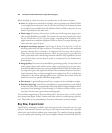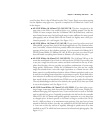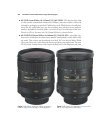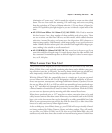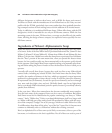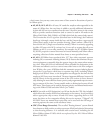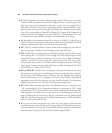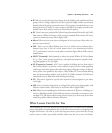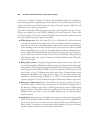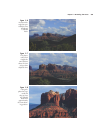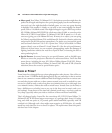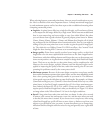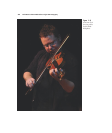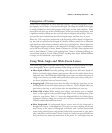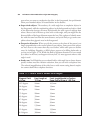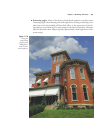14-24mm, 17-35mm, 24-70mm, 18-70mm, and 28-200mm zooms as I do. Indeed, a
much saner approach to expanding your lens collection is to consider what each of your
options can do for you and then choose the type of lens and specific model that will
really boost your creative opportunities.
So, in the sections that follow, I’m going to provide a general guide to the sort of capa-
bilities you can gain for your D7000 by adding a lens to your repertoire. Then, at the
end of the chapter, I’ll provide a more detailed discussion of some specific lenses and
how they might fit into your camera bag toolkit.
■ Wider perspective. Your 18-55mm f/3.5-5.6 or 16-85mm f/4-5.6 lens has served
you well for moderate wide-angle shots. Now you find your back is up against a
wall and you can’t take a step backwards to take in more subject matter. Perhaps
you’re standing on the rim of the Grand Canyon, and you want to take in as much
of the breathtaking view as you can. You might find yourself just behind the base-
line at a high school basketball game and want an interesting shot with a little per-
spective distortion tossed in the mix. There’s a lens out there that will provide you
with what you need, such as the 12-24mm and 10-24mm Nikon zooms I’ll describe
later in this chapter.
■ Bring objects closer. A long lens brings distant subjects closer to you, offers bet-
ter control over depth-of-field, and avoids the perspective distortion that wide-angle
lenses provide. They compress the apparent distance between objects in your frame.
Don’t forget that the Nikon D7000’s crop factor narrows the field of view of all
these lenses, so your 70-300mm lens looks more like a 105mm-450mm zoom
through the viewfinder. The image shown in Figure 11.6 was taken using a wide
16mm lens, while the images in Figures 11.7 and 11.8 were taken from the same
position as Figure 11.6, but with focal lengths of 70mm and 200mm, respectively.
■ Bring your camera closer. Macro lenses allow you to focus to within an inch or
two of your subject. Nikon’s best close-up lenses are all fixed focal length optics in
the 60mm to 200mm range. But you’ll find good macro zooms available from
Sigma and others. They don’t tend to focus quite as close, but they provide a bit of
flexibility when you want to vary your subject distance (say, to avoid spooking a
skittish creature).
■ Look sharp. Many lenses are prized for their sharpness and overall image quality.
While your run-of-the-mill lens is likely to be plenty sharp for most applications,
the very best optics are even better over their entire field of view (which means no
fuzzy corners), are sharper at a wider range of focal lengths (in the case of zooms),
and have better correction for various types of distortion.
David Busch’s Nikon D7000 Guide to Digital SLR Photography358



